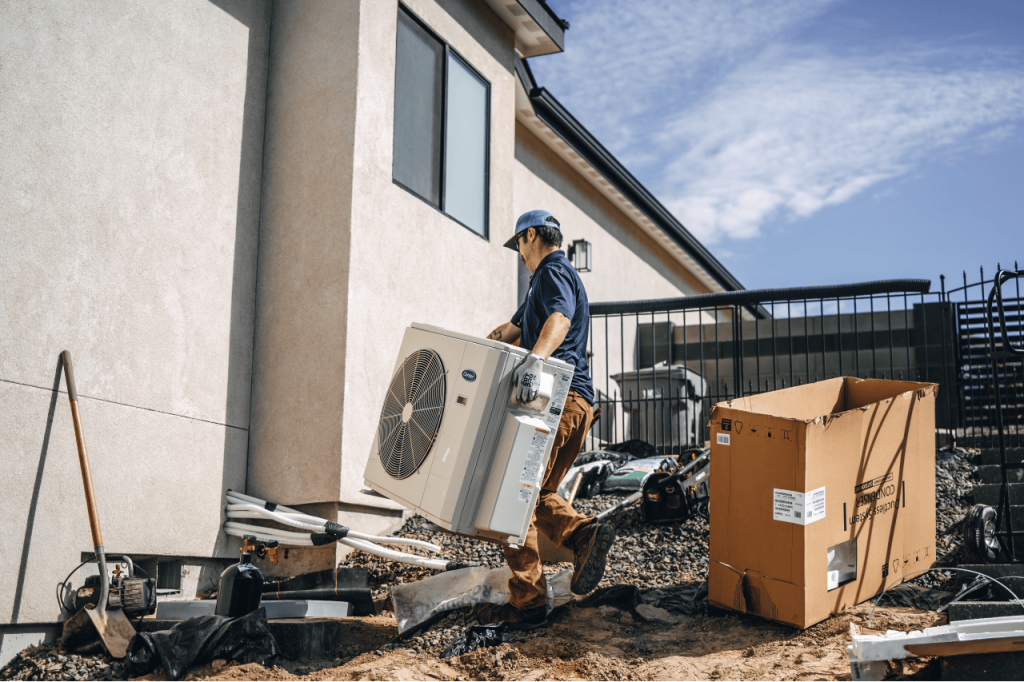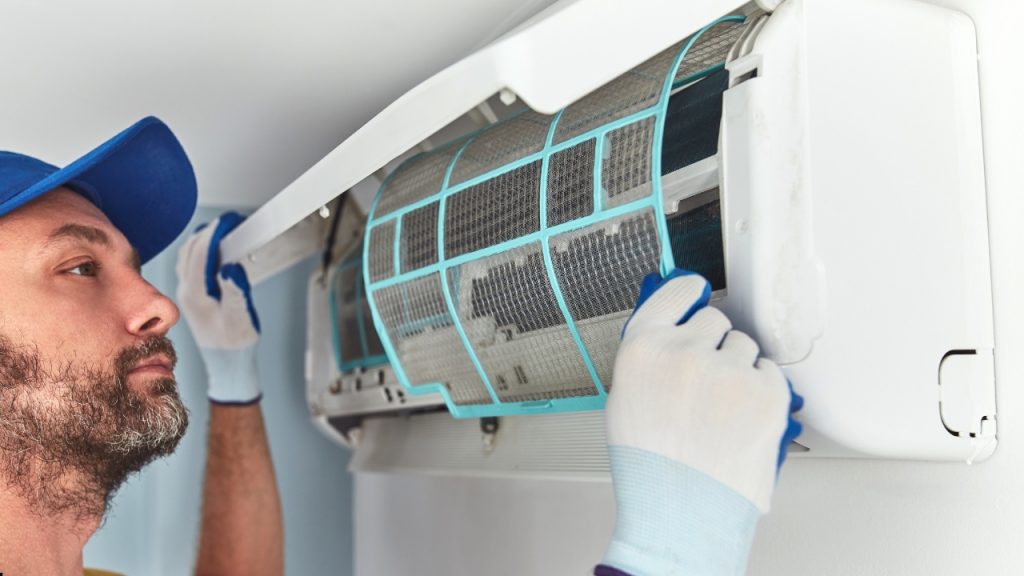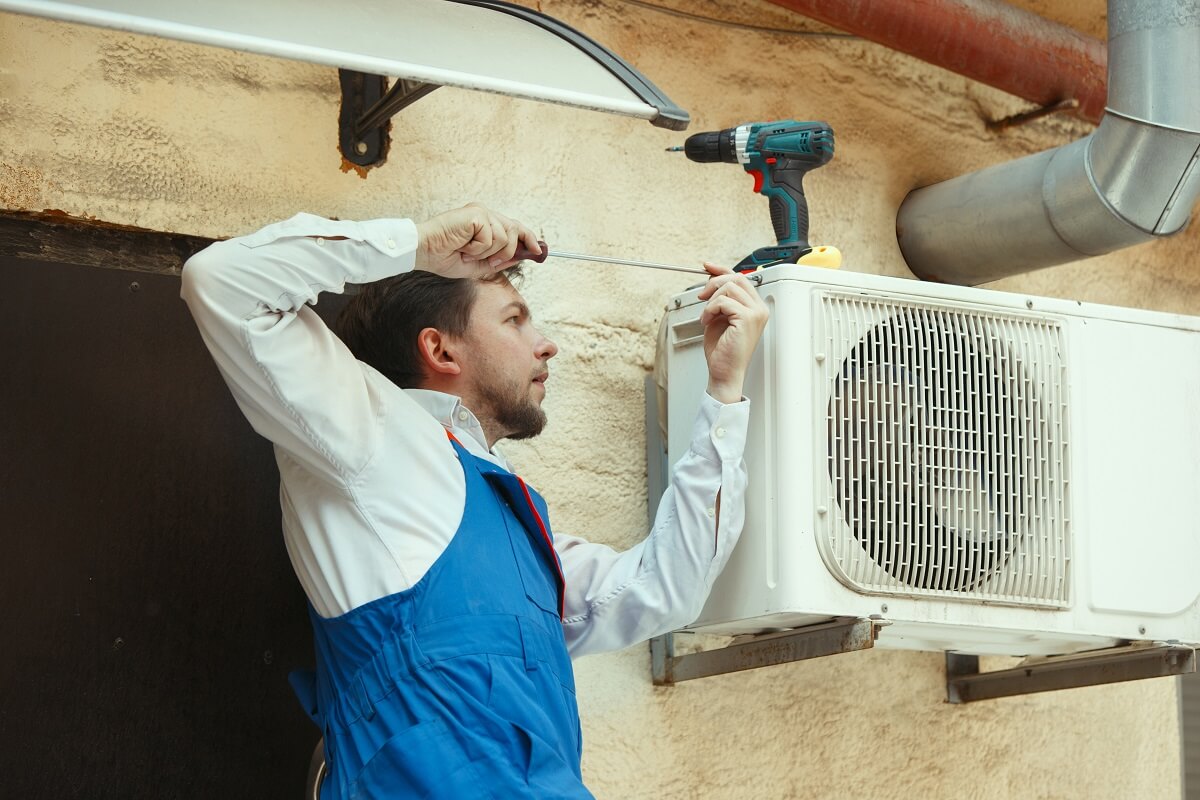You installed a split system air conditioner to keep your Mornington Peninsula home comfortable through hot summers and cool winters. You expected it to last for years. But now it leaks, makes strange noises, or struggles to cool the room.
You didn’t do anything wrong, but the split system air conditioner installation might not have been done properly. A lot of air cons stop working early because of poor installation. Even a small mistake can cause big problems down the track.
In this post, we explain what goes wrong during installation, how to spot the signs early, and what you can do to keep your air con running longer. Before you switch it on again, read this. You can save yourself stress, sweat, and a big electricity bill.
Common AC Installation Mistakes
Even the most high-tech split system can fail if it’s set up wrong. Some classic mistakes to avoid:
Wrong placement:
Outdoor condensers need a bit of shade and a solid, vibration-damping mount. Bolting the unit directly to a wall in full sun is a recipe for noise, rattles and premature wear.
Uninsulated or excessive refrigerant tubing:
Never let the copper coolant lines “sweat.” If the pipes aren’t insulated, dripping condensation can warp walls and foster mould. Conversely, running too much extra tubing between indoor and outdoor units makes your system sluggish to cool down (pro tip: keep indoor and outdoor units as close as practical).
Poor clearance and airflow:
Cramped outdoor units choke on warm air. Leave at least half a metre of breathing room around your condenser so the fan has space to pull in fresh air.
Outdated refrigerant:
Trying to save a buck with old R22 gas? Think again. R22 is being phased out in Australia – after 2019 it’s only allowed for servicing existing units, and by 2030 it’s banned. An installer that used R22 means you’ll pay through the nose for any repairs.
Skipping the pro:
Big mistake: DIY installation.
In Australia, split system installers must be ARC-licensed. This isn’t just a sticker – it means the tech is trained to handle refrigerants, electricals and regs. A licensed pro knows all the little details (drainage, wiring, brackets, the right fittings) that an amateur might miss. Trust me, I’ve seen DIY folks blow compressors or trip breakers by trying to save a few bucks.

Signs of a Poor Installation
How do you tell if the job was dodgy? Like a dodgy Barbie on a hot day, a bad AC install eventually gives off some stink signals:
Strange noises:
Clanks, hisses or squeals? Those unsettling sounds usually mean something’s loose or misaligned. (A hissing whoosh could be refrigerant escaping.)
Water leaks or puddles:
Unless you installed an indoor fountain, a leaking unit means condensate isn’t draining. Often it’s an installer tilt or drain issue.
Hot & cold spots:
If one room freezes while another roasts, the unit might be wrong-sized or poorly located. It’s like having a stuck damper or duct flap.
Rapid cycling:
If your AC chatters on/off every few minutes, efficiency plummets. This often happens when the thermostat or unit size is mismatched during setup.
Sky-high power bills:
A system fighting the wrong conditions will gulp energy. If your next bill looks like last summer’s, a flawed install could be to blame.
Spot any of these? It’s a good time to book an inspection – better now than a sweaty emergency later.

Professional vs DIY: Split System Installation
You might be handy with a toolbox, but a split system AC isn’t a weekend DIY project. Handling refrigerant lines is strictly regulated – only ARC-licensed technicians can legally install or service ACs. They’ve done the safety training (and carry insurance if something goes awry). You can even verify an installer’s credentials on the Australian Refrigeration Council’s “Look for the Tick” portal.
Trust me, I’ve seen confident DIYers end up with locked-up compressors or buzzing breakers. The rule of thumb is: on your own, only swap filters or dust off the units. “DIY maintenance can lead to unintended damage and voided warranties,” notes a Melbourne HVAC pro.
Plus, licensed installers carry warranties and insurance on their work – something you don’t get DIY. Bottom line: pay a bit more upfront and avoid big headaches (or costs) later.
What’s the Best Time to Install Air Conditioning?
Timing can save you big bucks and headaches. Trying to book an install in peak summer is like lining up for the checkout on Boxing Day – chaos. Instead, target the off-season. Local experts recommend autumn (March–May) as ideal: demand is low after summer and retailers often drop prices. You might even snag last year’s model on sale.
Spring (especially before the holidays and heat wave) can work too – contractors aren’t slammed yet, and you’ll get better service. In fact, ActronAir (an Aussie AC maker) confirms shoulder-season installs (spring or autumn) usually mean more competitive pricing and discounts. In short, unless you enjoy sweating out a bargain-hunt, aim to buy and install off-peak.
Split System Maintenance Tips

Even the best install needs some TLC to last. Keep these maintenance tips in mind:
Dust and filter care:
Every month (or at least every quarter), clean or replace the indoor filters. A clogged filter starves your AC of airflow and forces it to gulp more power. Wipe down vents and the indoor unit with a soft cloth (no harsh sprays) for good measure.
Clear the drain line:
The indoor unit has a little drain hose for condensate. If it clogs (with dust or mould), water will back up into your home. Periodically ensure the drain is clear, and water flows outside.
Keep the outdoors clear:
Trim back plants and sweep away leaves, sand or debris around the outdoor unit. Good airflow keeps your system efficient. Also ensure the unit stays level so condensate drains properly.
Annual pro service:
Once a year (ideally late spring or early autumn), have a licensed technician do a check-up. They’ll clean the coils, check refrigerant levels, tighten electricals and catch tiny issues before they blow up.
Watch for corrosion:
Our coastal air is salty. At each service, ask techs to inspect for rust on the outdoor coils or casing. A quick anti-corrosive spray can save big bucks if caught early.
These simple habits pay off. The Australian Government notes that changing just 1°C on your thermostat can alter energy use by 5–10%. In practice, a clean and well-tuned AC will sip electricity and work far beyond its warranty period.
How Long Should a Split System Air Conditioner Last?
With luck and care, a split system is a long-term investment. Modern units typically come with a 5-year warranty, but properly installed and maintained systems can hum along for many, many years. Industry vets often say 15–20 years is realistic if you don’t overwork the poor machine.
The trick is making sure it was sized correctly in the first place: a unit that’s a bit too big will short-cycle, while one that’s too small will burn out trying. Keep it clean, keep it serviced, and you might be surprised by how many years it keeps running.
Conclusion
Key takeaways:
- Get it installed right. Always use a licensed pro who knows the local climate and regs. Proper placement, correct refrigerant and sturdy mounts are non-negotiable.
- Time it smart. Schedule your install off-season (think March–May or Sept–Oct) to snag better deals and quicker service.
- Maintain regularly. Clean filters, clear the area and book that annual service. Small fixes today mean no meltdowns tomorrow.
Think of it this way: a cheap, shoddy install might save you a few dollars now but will cost you comfort (and cash) later. For example, freshly serviced ACs are often touted in real estate ads – proof that a solid install is worth its weight in gold.
Get multiple quotes, verify licenses, and remember: a few extra dollars now can save you a fortune later. If your split system AC is giving you grief, don’t tough it out. Call a Mornington Peninsula air conditioning expert for an inspection or quote – they’ll ensure your setup is solid so you stay cool under pressure.
For Mornington Peninsula locals: keep the barbecue sizzling and let your home stay frosty.
For more tips, the Australian Government’s energy website has a great heating & cooling guide. With the right install and a bit of upkeep, your AC should feel like a refreshing sea breeze, not a dying fan. Stay chill, mate!
FAQs
Why does my new split system air conditioner break down so quickly?
Most early breakdowns happen because of poor installation. If the installer didn’t follow the correct steps—like proper placement, sealing, or electrical work—your unit might not run efficiently or last as long as it should.
How do I know if my air conditioner was installed incorrectly?
Watch for signs like water leaks, weak airflow, strange noises, or frequent shut-offs. If the unit struggles to cool your space or your power bills suddenly spike, it’s worth getting a second opinion.
Is it really that important to hire a licensed installer in Mornington Peninsula?
Yes—absolutely. A licensed technician understands local regulations, knows how to handle refrigerant safely, and follows best practices. Hiring someone unqualified can cost you more in repairs or replacements later.
Can bad installation void my warranty?
Yes. Most manufacturers require professional installation to keep your warranty valid. If something goes wrong and the installer wasn’t certified, you could end up footing the bill yourself.
How long should a properly installed split system air conditioner last?
With proper installation and regular maintenance, most units last 10–15 years. If yours is already giving up after just a few years, chances are something went wrong at the beginning.

